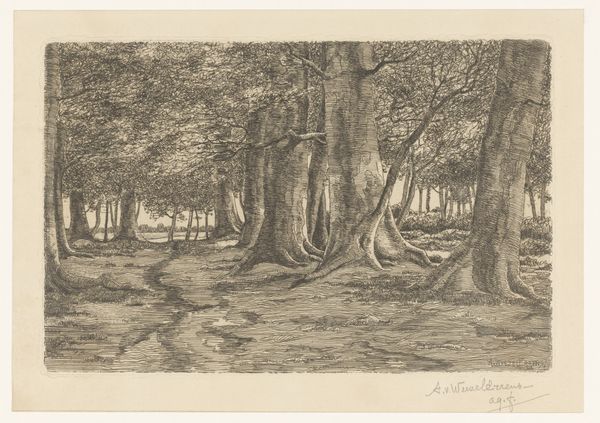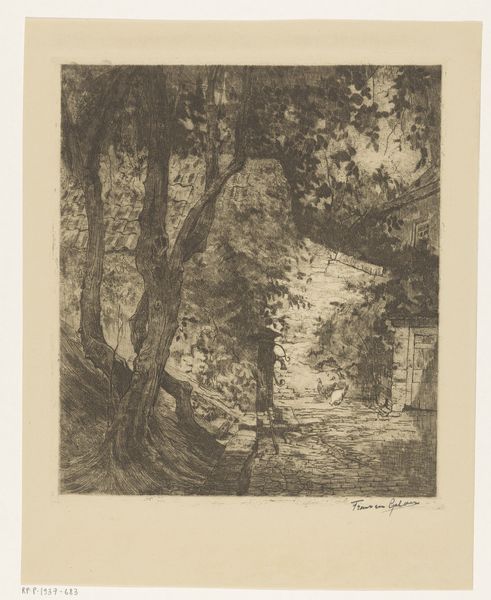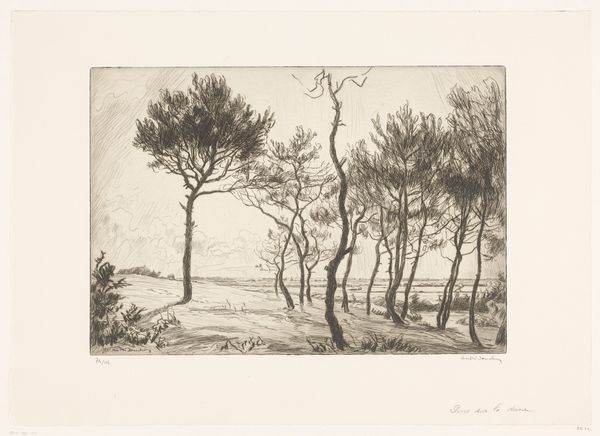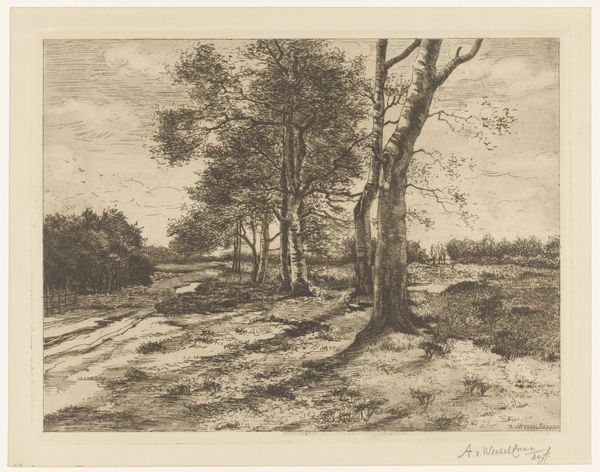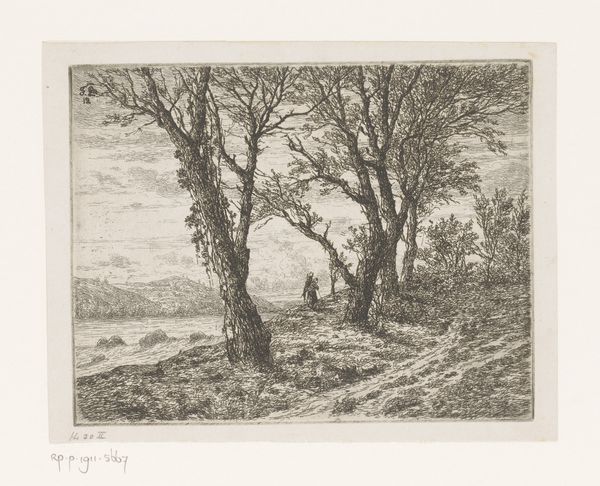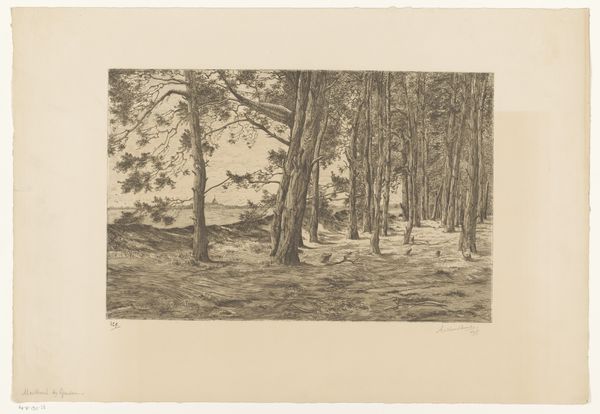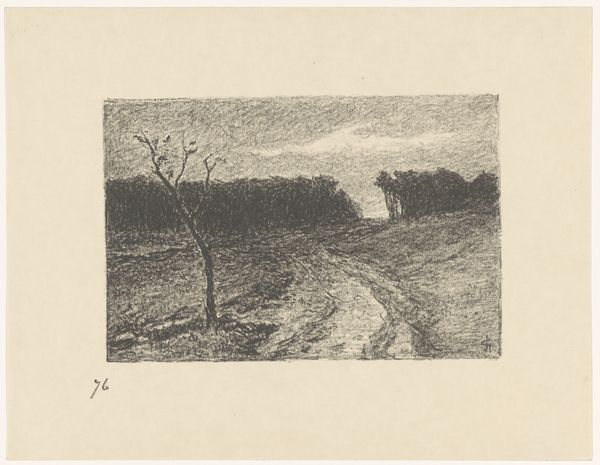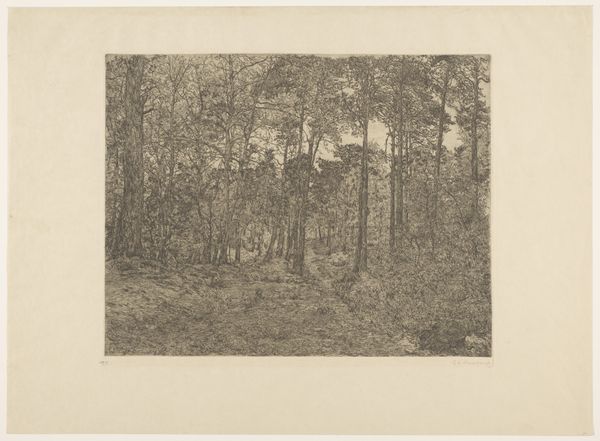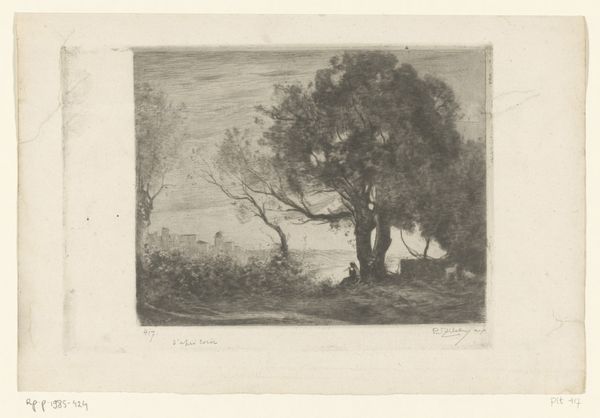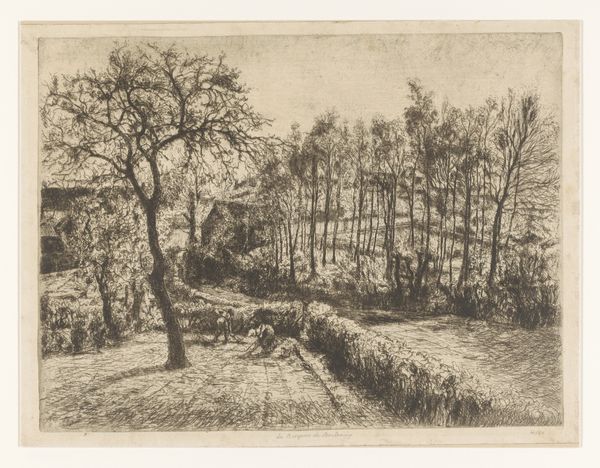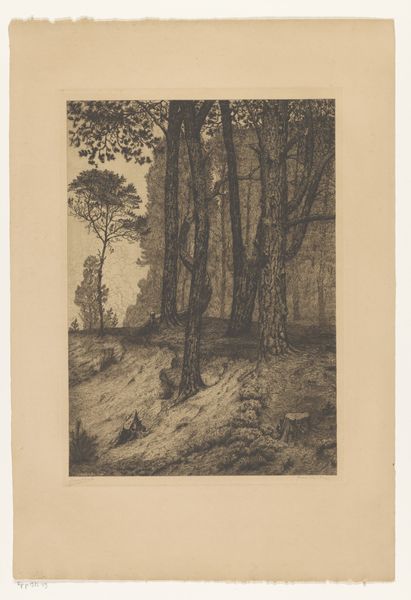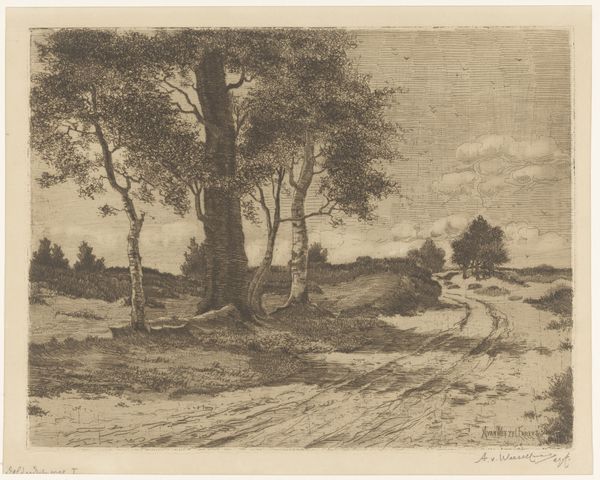
Dimensions: height 127 mm, width 155 mm
Copyright: Rijks Museum: Open Domain
Curator: This somber etching immediately whispers forgotten fairytales to me, all towering trees and looming shadows. Editor: Here we have "Heuvel met bomen," which translates to "Hill with Trees," created by Adolphe P.H. J. van Weezel Errens between 1876 and 1911. It's currently held in the collection of the Rijksmuseum. Looking at it through a lens of class and urbanization, these landscapes in the late 19th century became powerful signifiers. A yearning for an untouched space, perhaps? Curator: Exactly! It’s almost gothic in its romanticism, but also so... Dutch? Those stubby trees feel oddly familiar from my childhood, and the inking captures this specific quality of Northern light that I have etched into my bones, no pun intended. Editor: The interesting tension is precisely this localization married to the rise of the bourgeoisie. The ability to consume and control nature was tied to specific socioeconomic classes at that time. These were people writing new definitions of identity and purpose in response to industrial labor. Van Weezel Errens uses the monochrome aesthetic typical of etching to make it simultaneously intimate yet monumental, emphasizing the scale of these conflicting themes. What power dynamics do we overlook when considering who even gets to pause and notice landscape's artistic potential? Curator: It definitely puts our role as temporary keepers into question, right? Though this artist makes a lasting statement within that paradigm. I can’t shake how the technique mimics a fading memory—all scratchy, like a half-remembered bedtime story with questionable morals. I bet its monochromatic aesthetic resonated even stronger at a time of early color photography. Editor: This reading encourages us to remember artmaking's inherent intervention. The subjective artistic filter shapes the very landscape depicted. In light of that, where do you imagine our understanding will evolve concerning contemporary landscape practices and pressing matters of ecological concern and the power imbalances around them? Curator: A daunting, beautiful thought to leave our listeners with, for sure. Thanks. Editor: And to you!
Comments
No comments
Be the first to comment and join the conversation on the ultimate creative platform.
